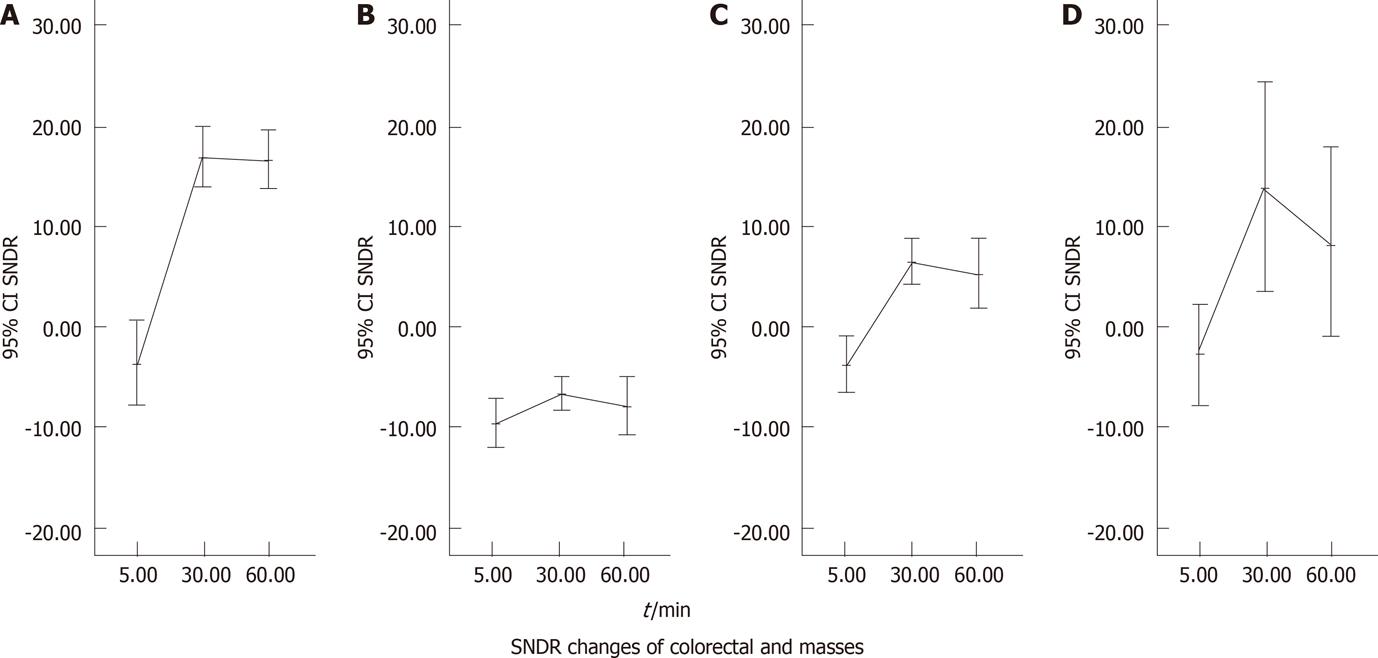Copyright
©2011 Baishideng Publishing Group Co.
World J Gastroenterol. Aug 21, 2011; 17(31): 3614-3622
Published online Aug 21, 2011. doi: 10.3748/wjg.v17.i31.3614
Published online Aug 21, 2011. doi: 10.3748/wjg.v17.i31.3614
Figure 7 The signal intensity difference-to-noise ratios changes of colorectal wall and masses before and after the gadopentetate dimeglumine and fluorescein isothiocyanate-loaded solid lipid nanoparticle enema.
A: The signal intensity difference-to-noise ratios (SDNRs) of colorectal wall in normal mice increased sharply after 20 min of the gadopentetate dimeglumine and fluorescein isothiocyanate-loaded solid lipid nanoparticle (Gd-FITC-SLN) enema (P < 0.01) and remain at a high level in the following 30 min with a minimum decrease (P > 0.05); B: The SDNRs of colorectal wall in group 1 [1,2-dimethylhydrazine (DMH) treated for 10 wk] increased significantly, with about one half of the amplitude compared with that of the normal mice, after the Gd-FITC-SLN enema; a visible decrease with no statistical significance (P > 0.05) of SDNRs occurred in the following 30 min; C: The SDNRs of colorectal wall in group 2 (DMH treated for 16 wk) increased and decreased non-significantly in post-enema images (P > 0.01); D: The SDNRs of intraluminal masses in DMH treated mice increased significantly (P < 0.01) and decreased non-significantly in the post-enema images (P > 0.01). SDNR: The Signal Intensity Difference–to-noise ratios.
- Citation: Wu T, Zheng WL, Zhang SZ, Sun JH, Yuan H. Bimodal visualization of colorectal uptake of nanoparticles in dimethylhydrazine-treated mice. World J Gastroenterol 2011; 17(31): 3614-3622
- URL: https://www.wjgnet.com/1007-9327/full/v17/i31/3614.htm
- DOI: https://dx.doi.org/10.3748/wjg.v17.i31.3614









